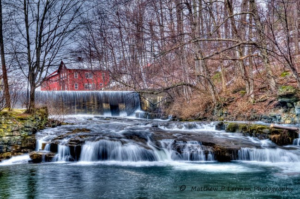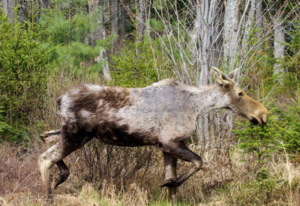Rain, Road Salt, Water Pollution and ER Tick Visits

Image from The Brattleboro Reformer
Reprinted with permission from the Center for Research on Vermont, November 15 edition of Vermont Research News.
MORE RAIN EXPECTED
The northeastern U.S. has experienced dramatic changes in precipitation over the past century. A study co-authored by Dr. Brian Beckage found that annual extreme precipitation was 53% higher from 1996-2014 than it was from 1901-1995. Although coastal areas experience more extreme and total precipitation on average, the increase was largely uniform across the northeast. See interview with State Climatologist Lesley-Ann Dupigny Giroux at http://bit.ly/interview-Lesley-Giroux.

Deicing winter roads by applying salt is poisoning Vermont’s ecosystems, and experts say it’s over-salting by private contractors in parking lots and other urban areas that are increasingly the source of the salt. Modfos / iStock
ROAD SALT
While road salt may make icy roads safe during Vermont winters, it negatively affects the health of nearby waterways like Lake Champlain. A study conducted by researchers at the Global Lake Ecological Observatory Network looked at the effects of salt on freshwater lakes in the North American Lakes region, including Vermont. Read more at http://bit.ly/Road-salt-study.
More information from the Center for Research on Vermont can be found at http://bit.ly/Center-for-research-on-VT.
WATER POLLUTION

Image from Matthew P. Lerman Photography
Is New Jersey’s water safer than Vermont’s? The Garden State recently revised its standards for safe levels of PFOA (http://bit.ly/NJ-safe-PFOA), a manufactured chemical found in household and commercial items, to 14 parts per trillion—6 parts per trillion lower than Vermont’s safe standard, according to VPR. Last year, PFOA levels in drinking water around the Bennington area were found to exceed state standards, and a Department of Health report noted that residents’ blood levels of the chemical were strongly correlated with levels found in contaminated wells. See the report at http://bit.ly/Dept-Of-Health_PFOA-report.
Norwich University Geology Professor Laurie Grigg’s work has long focused on climate change, including her recent contribution to a global pollen and charcoal database to document vegetation and fire responses to abrupt climate change during the last glacial period. Professor Griggs is now examining lake sediment to determine how aquatic ecosystems have acclimated to climate changes over the last ten centuries using a federal grant. Read more at http://bit.ly/pollen-charcoal-climate.

Photo by Dan Bergeron (from NH Fish and Game website)
EMERGENCY ROOM TICK VISITS
For 2017, tick-related emergency room and urgent care visits in Vermont have been consistently above average. The adult ticks will remain active through November. Ninety-nine percent of tick borne disease in Vermont is caused by the black-legged tick. Encounters with black-legged ticks can occur anytime during the year when the temperature is above freezing.
And speaking of ticks, the Vermont Fish and Wildlife Department’s multi-year long study gauging the impact of winter ticks on the state’s moose has ended. After its first year, eighteen of the thirty radio-collared moose calves survived their first winter, with the twelve that died exhibiting signs of winter tick infestation and severe weight loss. As for the adults, twenty-seven of the study’s thirty collared cow moose survived, with fifteen producing calves in the spring. Read more at http://bit.ly/VT-winter-tick-study.








Leave a Reply